Average sizes and life expectancy for this breed:
Known for their distinctive look and proud, independent spirit, the Chow Chow is an ancient breed that originated in China. They were originally developed for a range of jobs including hunting, pulling carts, herding, and for protection. Today, these canines are often referred to as being catlike in personality. They combine the nobility of a lion, the appeal of a teddy bear, the humour of a panda, the grace and independence of a feline, and the loyalty of a dog.
Chow Chows are refined, dignified, and devoted to their owners. However, they are known to be fairly aloof with strangers. If these loyal dogs are raised with children, they will accept them happily. But, like many other breeds, they do not tolerate rough handling well, so always teach children how to handle dogs with appropriate care.
Chow Chows are strong-willed so they may not be the best choice of pet for first-time dog owners. However, with the right attention, love, and training, these dogs can quickly become much-loved, devoted members of the household.
See available puppies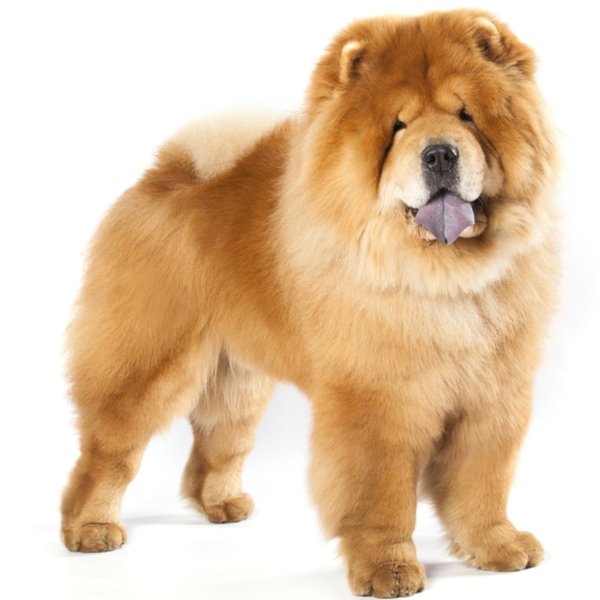

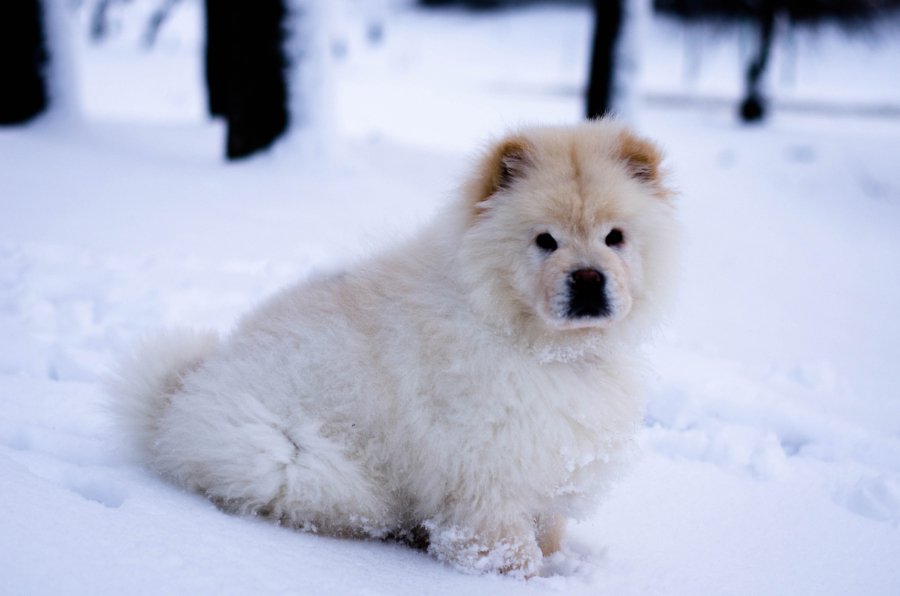


Chow Chows are thought to be one of the most ancient domestic dog breeds and are genetically very close to the wolf. In fact, this breed is depicted in sculptures and pottery pieces that date back to the Han Chinese Dynasty (206 BC – 220 AD).
However, some experts believe they could be even older than this, originating in the Arctic Circle, Mongolia, and Siberia, before being imported to China. During the Miocene period (28-12 million years ago), a carnivorous animal existed that looked like a cross between a fox and a small bear, called the Simocyon. This is believed to be the ancestor of Chow Chows. This makes sense because of the Chow Chows bear-like appearance and characteristic blue tongue that is also seen in small bear species of Tibet and Manchuria.
There is an ancient Chinese fairytale that describes the unique blue tongue of Chow Chows. It goes like this:
"When the world was being created, what dog was allowed to lick up all the little pieces of blue sky which fell on earth when the stars were being set in their place?"
"The Chow" said Li Fu, "and that´s how he got his blue tongue".
After many years, Chow Chows found their way to the monasteries of Tibet, where they were bred for hunting and protection. The name Chow Chow is thought to be derived from the English term used to describe cargo from the Orient in the 19th Century.
These dogs didn’t appear in Western Europe until the late 1700s, when they were brought over from China on clipper ships. These dogs immediately received widespread attention because of their unique appearance. Some reports state that several Chow Chows were housed in the London Zoological Gardens, where they were described as ‘the wild dogs of China. Queen Victoria also owned one of these dogs from 1865.
However, it was the Marchioness of Huntley who promoted the breed in the United Kingdom during the late 1800s. She imported a Chow Chow called Periodot, whom she began breeding in 1887 with another dog owned by Lady Granville Gordon. Soon after, Lady Granville Gordon’s daughter, Lady Faudel Philips, became the leading breeder and exhibitor of Chow Chows, right up until the end of the 1800s. The Chow Chow Club was founded in 1895.
Around the same time, these dogs were growing in popularity in America. A Chow Chow called Chinese Chum was imported into the country by Mrs. Proctor in the early 1900s. This dog won the first US Chow Chow competition in 1905. The American Chow Chow Club was founded in 1906.
Today, Chow Chows are popular companions the world over, thanks to their distinct appearance and independent, protective spirits.
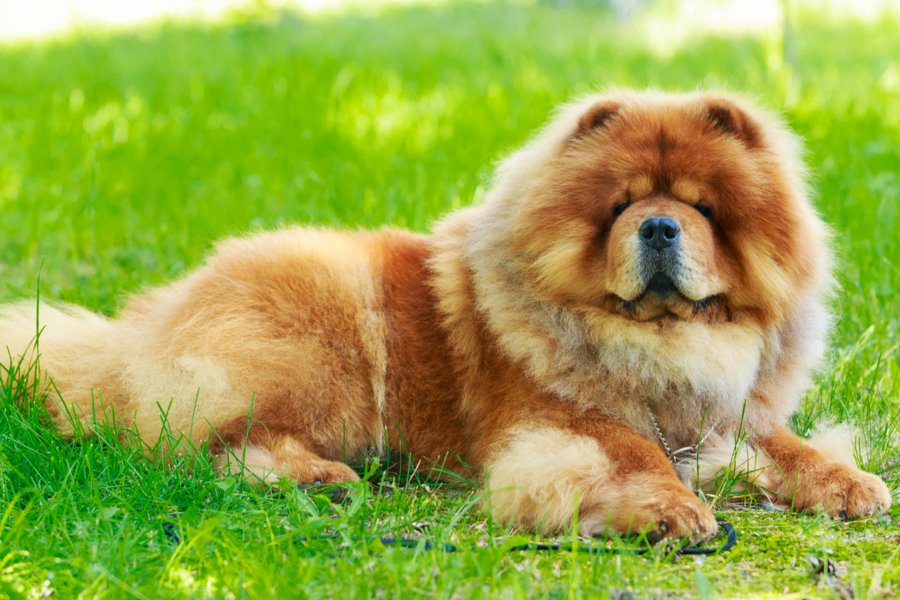
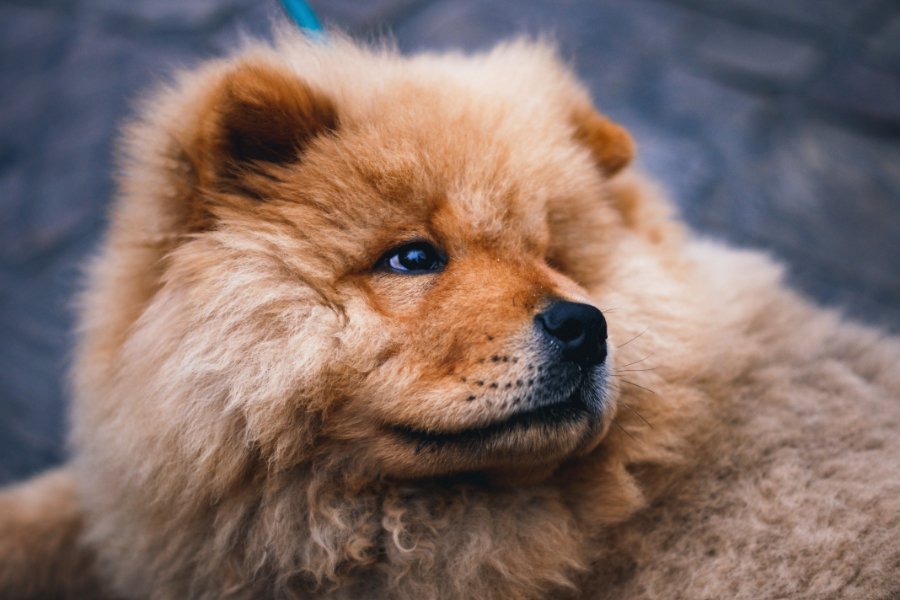
The Chow Chow is a large, impressive-looking dog with blackish/blue tongues, thick and dense coats, and large, flat heads. These dogs have relatively long muzzles with wide, black noses. Although, some dogs with near cream or white coats have much lighter noses. Self-coloured is permitted as a breed standard.
Their eyes are dark and oval-shaped. Some dogs with blue or fawn coats have eyes that match their colouring. Their small ears are slightly rounded at the tips and very thick. They carry them upright, set wide apart on the head, and tilted forward over their eyes. The way their ears stand up on the head makes them appear as though they are always scowling.
These dogs have very strong jaws with a perfect scissors bite. Their necks are well-muscled and held somewhat arched, giving them their aloof and proud appearance.
Their shoulders are muscular, well-developed, and sloping, with perfectly straight front legs. These dogs also have deep chests with well-sprung ribcages and level backs. They have powerful hindquarters and very cat-like feet, which are small and round. Their tails are set high and carried well over their backs.
Chow Chows come in two coat varieties: smooth and rough. Smooth-coated Chow Chows have a shorter double coat boasting dense, straight hair that stands upright and is very plush to the touch. Rough-coated Chow Chows have thick, dense straight hair that stands well away from the body. These dogs have a coarse outer coat, and a soft, woolley undercoat. Rough-coated Chow Chows also have much thicker hair around their necks, giving them a lion-like appearance, as well as extensive breechings on the backs of the thighs.
Colours accepted under the breed standard are as follows: Black, Blue, Cream, Fawn, Red and White.
Shading is allowed under the breed standard. In fact, the underpart of the tail and the backs of the thighs are often lighter in colour. However, parti-colours are not accepted.
Chow Chows are loyal, dignified, and very protective of their families, which can make them very aloof and wary around strangers. These dogs often form very strong bonds with one member of the family in particular. However, they are loving to all members of the family as long as they have been introduced with care. Owners will tell you that Chow Chows are one of the cleanest dog breeds. They are also incredibly proud and independent which are traits that have often seen them described as being cat-like.
These aren’t your average social, outgoing dogs. They are more reserved, laid-back, and quiet. While they are known to be very intelligent, these dogs do have a strong stubborn streak thanks to their ancestry as guard dogs and hunters. So, early and consistent training, socialisation, and education are essential to help your dog to understand their place in the household. Without this training, they can quickly become dominant and strong-willed. For this reason, they are not the best choice of canine for first-time dog owners. Instead, they will do well with owners who understand their unique needs and have the time and patience to devote to training.
These dogs are independent by nature so they can be left alone for short periods. However, they get very attached to their owners which can lead to separation anxiety if they are left alone for too long.
As mentioned above, Chow Chows are very wary of strangers. So, they will not tolerate unfamiliar people wanting to pet them when out on walks. Early socialization can tame this trait but these dogs were bred for protection so it’s not something you can completely get rid of. Chow Chows also have a strong instinct to chase anything that moves, so its best to keep your dog on a lead, especially around livestock and in countryside areas.
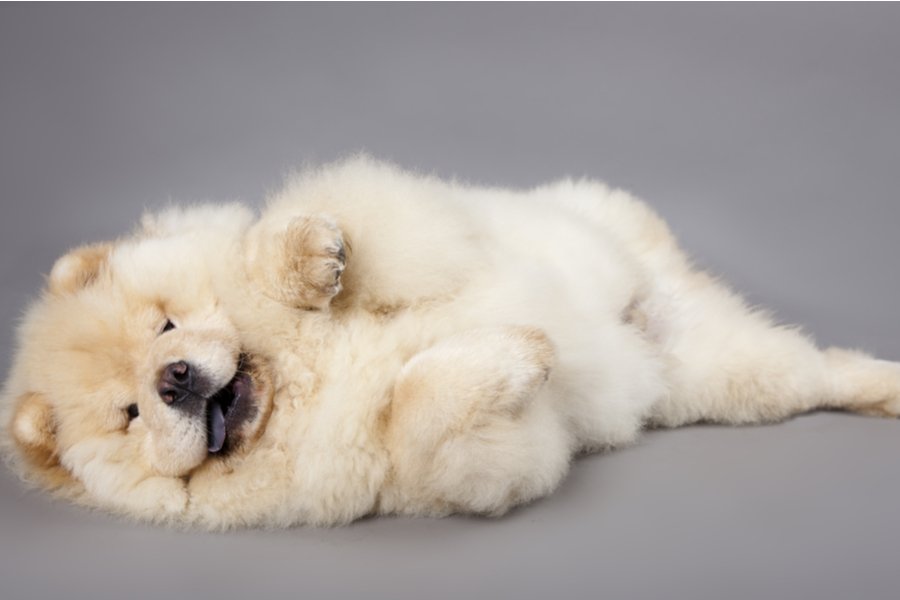
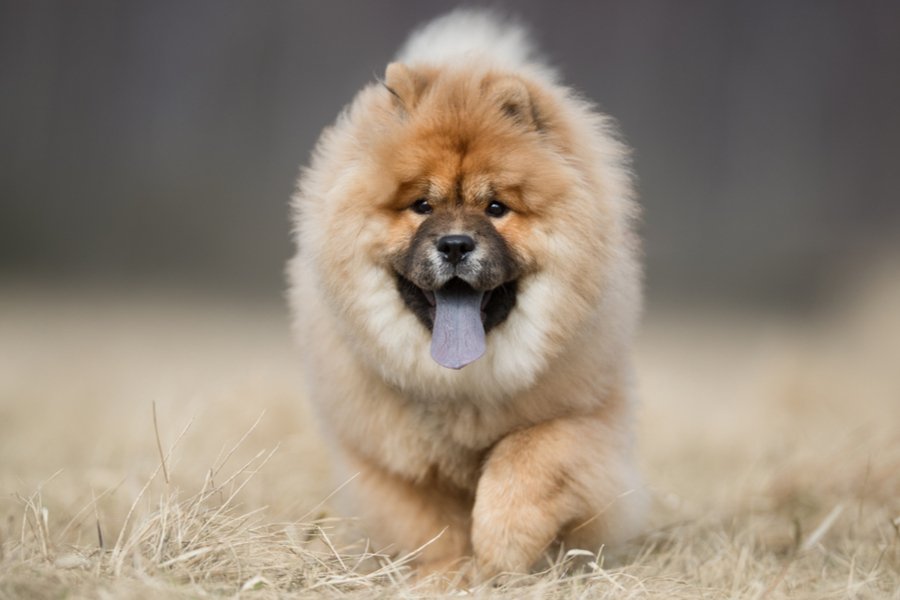
These dogs are intelligent and can pick up housetraining very easily. However, they do have a reputation for being difficult when it comes to obedience training because of their highly independent spirits. Patience and understanding are the keys to training this breed. Respect training and positive reinforcement work well. Never scold or punish a Chow Chow as this is likely to cause them to refuse training.
Chow Chows are more like cats when it comes to training; they will only do something if it’s a pleasant experience for them and if they understand why they are doing it! Use praise and lots of high-value treats to keep your pup engaged. It’s also best to keep training sessions short, especially in the beginning.
These dogs are at their happiest when they have clear, strict boundaries and rules. Start with easier commands such as ‘sit’ and ‘stay’. Then when your dog has grasped these, you can move up to more challenging commands such as recall training. Remember to start training and socializing your young puppy as soon as you get them home because trying to train an older Chow Chow who is set in his ways can be much harder!
Because of their thick, dense coats, Chow Chows need to be brushed regularly with a large slicker brush, metal comb, and a pin brush that reaches down into the undercoat. Daily brushing is best but you can get away with three times a week when needed. It’s a good idea to get your dog used to grooming from a young age so they are more likely to accept the routine as adults. Bear in mind that these dogs are also prone to drooling when they get excited. So, check the chest regularly for any wet patches and wipe dry. If left, these can lead to skin irritation, soreness, and inflammation.
Chow Chows are susceptible to dry skin problems. However, they still need to be bathed regularly using gentle ph-balanced products. A bath every 2-4 weeks is ideal. If you take your dog to groomer, it’s important to avoid putting them in ‘drying cages’. This is because Chow Chows can overheat very quickly which can be fatal.
In addition, you should examine and clean their ears regularly to keep them free of dirt and wax build-up. You can use a clean cotton ball or cloth with a vet-approved ear cleanser. If you notice them scratching their ears or shaking their head more than usual, consult your veterinarian right away as these could be signs of an ear infection. Daily teeth brushing is the best way to prevent tooth and gum diseases. However, brushing the teeth twice a week is enough to avoid any bacteria or tartar buildup. Ask for your vet’s advice about pet products if you are unsure of the best way to keep your dog’s mouth, gums, teeth, and tongue clean.
Lastly, remember to examine their whole body during grooming to check for any wounds, soreness, injuries, and other signs that your dog may have an infection or other health issues. Check their eyes too. They should be clean, clear, and free of any irritation or discharge.
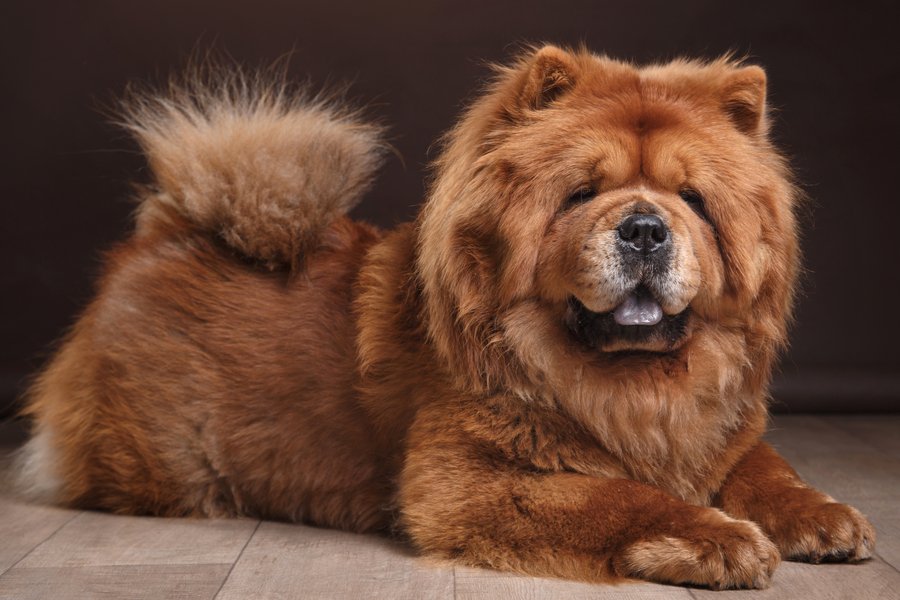
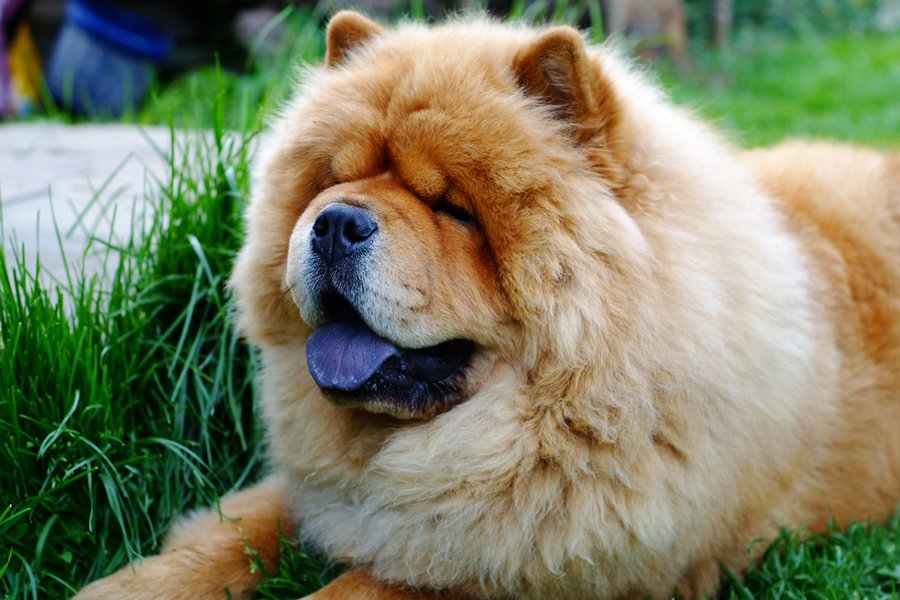
As one of the most ancient dog breeds, Chow Chows are fairly robust. However, they are known to suffer some health issues. Always make sure you purchase any puppy from a licensed breeder to ensure they have been well cared for, socialised, and weaned appropriately. A good breeder will also DNA check your pup to determine if any health conditions are present. If none are found, you will know you have a happy healthy puppy.
Some of the more common health concerns that seem to affect Chow Chows are:
The Chow Chow is known to be good around children because they have a natural protective instinct. However, they are probably best suited to homes with older children as these dogs don’t tolerate rough handling well. Remember that Chow Chows are also very strong dogs that can easily knock over a child. So, make sure all interactions are supervised to prevent any injuries.
Chow Chows have a reputation for being wary around strangers, which also includes other dogs. So you must exercise caution when taking your dog out for walks and make sure they are on a lead at all times. If you own another dog, it’s best to ensure your Chow Chow is of the opposite sex because they can become aggressive with dogs of the same sex. Early socialisation and interaction are essential to ensure your dogs get along well with each other.
Chow Chows have a strong predatory instinct so they are probably best as the only pet in the home. Other smaller animals such as cats and rabbits may be seen as prey.
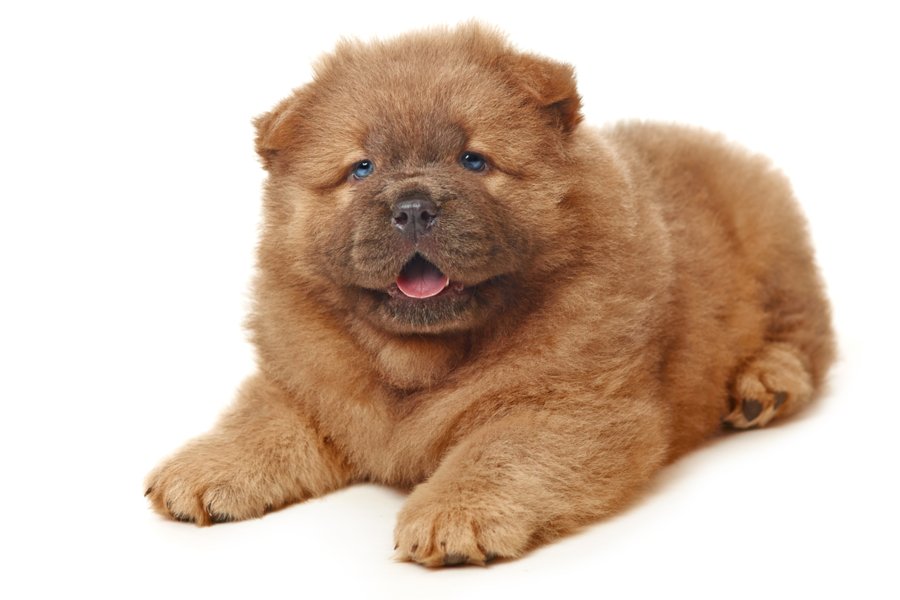

We can connect you with Breeders that are specialized in this particular breed.
See available puppies

Need some advice?
Whether you're a first time pet owner, an experienced pet owner, a new or long-time breeder, or just curious about pets, we've got you covered!

January 17, 2024
What Is The Personality Of Russian Blue Cats?
Russian Blue cats are most known for their distinctive shimmery blue-silver coat and piercing green eyes. However, this breed’s calm and gentle temperament is what makes them shine the most in the feline world.

January 17, 2024
10 Facts About Russian Blue Cat Breed
Russian Blues are one of the most aesthetically stunning cat breeds, with a gorgeous plush silvery coat and vibrant green eyes. However, it’s not only their appearance that is beautiful; their nature is too.

January 17, 2024
How To Choose The Right Cat Breed for You
Cats can make the most fantastic animal companions; they are adorable, friendly, and loving. However, not all felines are created equal. There are many different breeds, of which each has its unique personality traits.
Need some help?
Contact us to speak to our friendly advisor, who will gladly help you find your dream pet!



We are registered in England and Wales under registration number 12568840,
and our registered office is at 58-60 Kensington Church Street, W8 4DB London, England.
© 2023 The Pedigree Paws